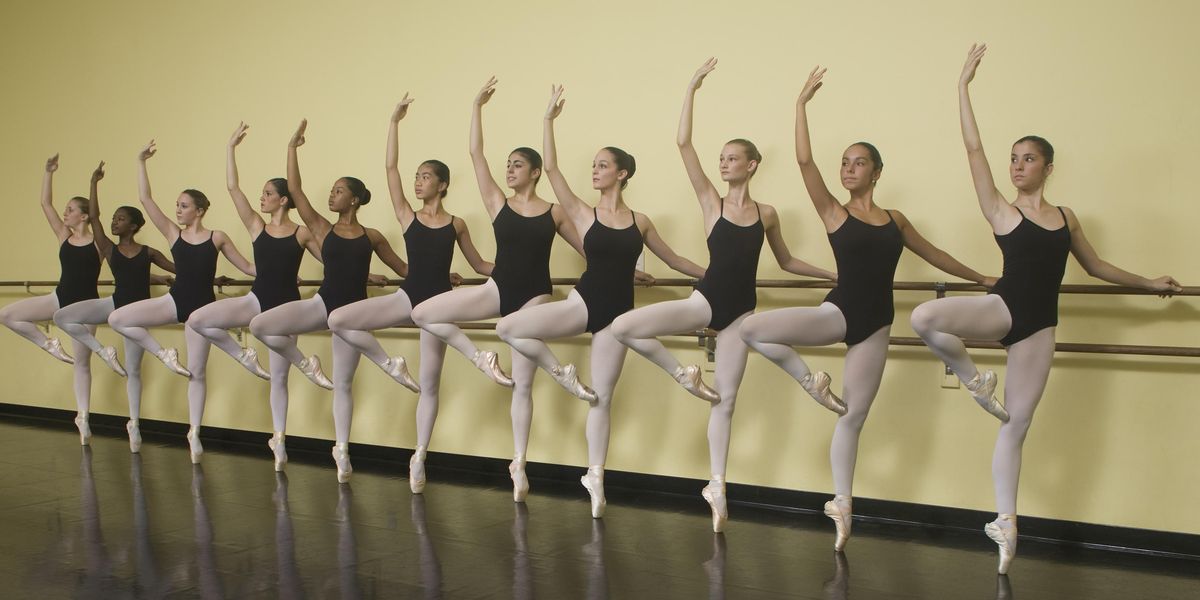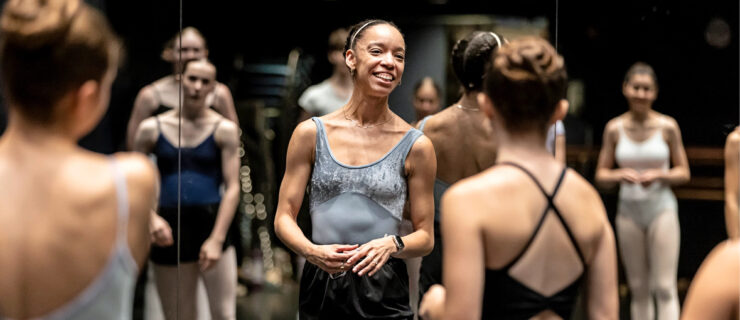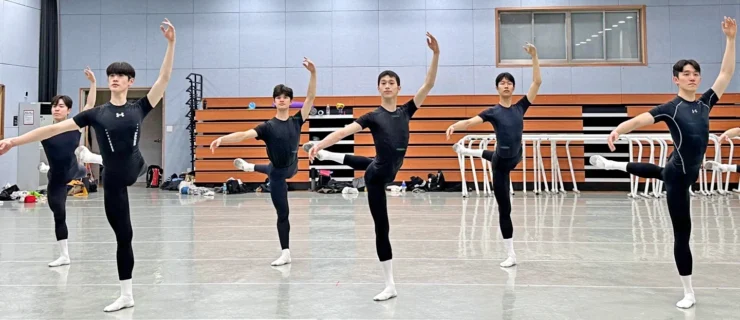The Pros and Cons of Class Size, Plus How to Thrive Regardless
I still have vivid memories of my summer intensive training: dancers packed tightly into a studio that could barely fit all the bodies, the mirrors misting up due to the heat and humidity. The energy in the room was invigorating, and I loved observing the talented dancers surrounding me. But sometimes it felt as if my teachers didn’t even see me, and I yearned for approval and feedback. Then one year I attended an intimate summer program at Kaatsbaan, in upstate New York, and I reveled in the individual attention. Yet I lacked confidence within the small group; I feared I wasn’t good enough and would disappoint my teachers. Both of these experiences are a reminder that class size is an important aspect of a student’s training, and that learning to adapt is a necessary skill.
Class size makes a difference in how dancers move and interact, with benefits to both small and large groups. Yet dancers are typically creatures of habit and can easily become accustomed to a set number of bodies in the studio. Adjusting may be more challenging than it seems, but those who can work to the best of their abilities within any situation are the dancers who will thrive as performers.
Seeing the Plus Sides of Each
Some dancers thrive in a large class. As a member of Kansas City Ballet Second Company, Sydney Ransbury begins her day dancing in a small pod of 10 dancers (to allow for social distancing). In a typical year, however, KCB II would join the professionals for a larger company class. Ransbury has benefited from both experiences but prefers having more people in the studio. “Larger classes offer a broader pool of dancers to watch and learn from,” she says. “Especially in company class, it can be so inspiring to look for different artistic and technical traits to incorporate into your own dancing.”
The dynamic in the room may feel more charged, too, as dancers feed off each other’s energy. Ransbury says, “I love that in a larger class you often get to repeat combinations since there are more groups during center. I sometimes find that I dance better the second time around, as my body can better understand what is coming.” Dancers can often join in with more than one group (particularly when combinations move across the floor) and are more likely to engage in friendly competition. Plus, the fear of failure may seem less pronounced when the teacher isn’t focused on you.

But intimate classes have benefits too. “Smaller classes lend themselves to more individualized attention from the teacher and allow more actual space to develop broader movement quality and physicality,” says Marion Tonner, director of the Oregon Ballet Theatre School. “Small group classes are easier to monitor progress,” she continues, adding that she enjoys creating a plan for each student’s advancement in order to focus on individual strengths and weaknesses.
Dancers may be more motivated and work with more consistency since they aren’t able to hide in the back of the studio or blend into large groups of people. As a student, you may feel greater inspiration to push past your limits when you know you are being seen and appreciated.
Learning to Adapt
If you train in a small group, it can be overwhelming to be thrown into a larger class, such as at a summer program. You may feel insecure (which is certainly not what you want on your first day at a summer intensive!). In a larger group there may be a greater variety in ability among the dancers, as well—you need to prepare yourself for more competition from your classmates.
“Having the close and generous attention of a teacher could dull a student’s competitive spirit, and possibly create a dependence on special attention,” says Tonner. If you rely on constant feedback from your instructor, remember that as a professional you will not receive the same amount of attention in a company class scenario; you must learn to trust and rely on yourself. You may not be receiving the feedback you are accustomed to, but it doesn’t mean you aren’t being noticed or appreciated in class.

Likewise, if you join a smaller class than you are used to, take note if you feel intimidated or scrutinized by your teacher’s more concentrated attention. Most often, dancers feel uncomfortable because they lack confidence. Keep in mind that receiving lots of corrections in class isn’t a sign that you’re failing, but that the teacher sees potential in your dancing.
“We often feel like every mistake we make is witnessed by the entire class,” says Ransbury. “If I am ever feeling self-conscious in a small setting, I remind myself that everyone is truly just focused on their own work, and most of the areas I’m struggling with are probably common throughout the class.”
Dancers who feel daunted by personal attention may be more likely to suffer from performance anxiety. If you feel this way, consider a small class to be an opportunity to prepare for a featured role. Becoming comfortable may take time, but finding your voice and confidence is a necessary skill for performers.
Whenever you experience a new class size, look at it as a learning opportunity. Your abilities as a dancer do not change based on how many people are in the room, nor do your technique and artistry depend on how many corrections you receive on any given day.
“Self-confidence is a continuous journey for every dancer,” says Ransbury. “Whether you prefer larger or smaller classes, I think it can be helpful to remember that both are incredibly beneficial, and, most importantly, that class is your time for yourself.”

Tips for Success in Any Size Class
- Look at the dancers around you as examples; observe what they do well and what needs work.
- When the teacher corrects another student, consider if it is something you could apply to your own dancing.
- Don’t hide in the back of the room! And just as important, don’t always take the front/center spot.
- If self-confidence is an issue, don’t question whether you measure up to the other dancers in class. You were placed in a specific level for a reason. Focus on doing your personal best: Be a better dancer than you were yesterday.
- Don’t depend on a teacher to validate your work. Practice analyzing and self-correcting your own dancing, and acknowledging your successes in class.






